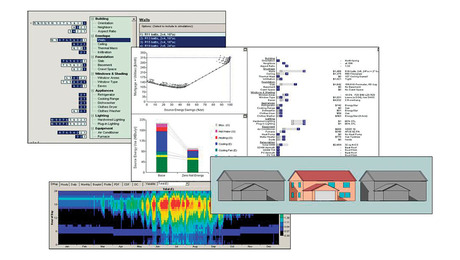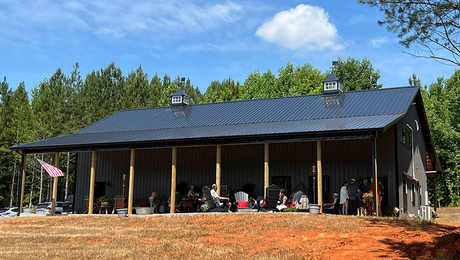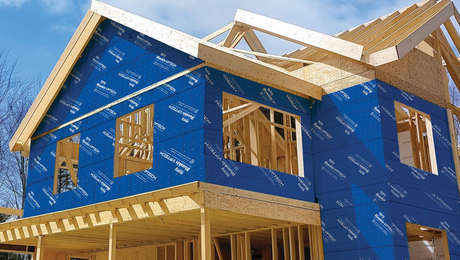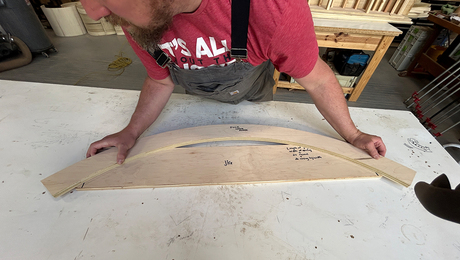Rethinking “Kids These Days”
A carpenter and technical instructor who has worked closely with a lot of young people explains why this experience has given him a positive perspective on both his students and the trades as a whole.
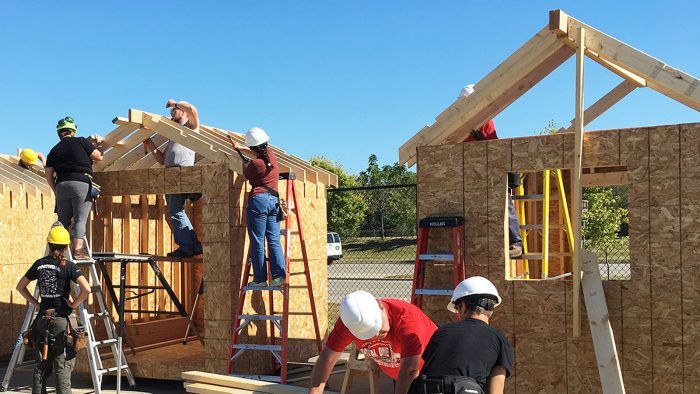
“Kids these days …” We’ve all heard the phrase, which is often accompanied by a shrug or an eye roll, and maybe even have said it ourselves. I know I’ve said it more than once in my years in the trades. The implication of this phrase when used at the job site is that young people just don’t show up ready to work, or that they lack the ambition or dedication we feel they should have. But in my last 30-plus years as a trades-person and carpentry teacher, I have learned that the reality is quite different.
How did I come to this enlightened view? It certainly didn’t involve any mountains or gurus. More likely, the cause is the time I’ve spent on the job site training new people and then teaching the craft of carpentry to students at the local tech college. I’ve worked closely with a lot of great young people who have shown that they are dedicated to making a difference in our craft and our world.
This experience has given me a more positive perspective on students and the trades as a whole. It has also taught me about the need for instructors and more-experienced tradespeople to change, adapt, and be curious about their craft.
My own journey into the trades and teaching
Becoming a carpentry teacher was not even remotely on my radar when I started in the trades. I wandered my way to a career as a trades instructor in a roundabout fashion. I was a small-town farm boy from Wisconsin who attended university at UW-Madison and graduated with a degree in construction administration. After that, I joined the Peace Corps for two years to build low-income housing and see the world, then returned home to Madison ready to go to work. I joined a fledgling remodeling company as a project manager and hit the ground running. During my 15 years there, I worked in many roles, including as a new-hire trainer.
While I hadn’t considered teaching as a career path, I had always enjoyed training folks who came to our company looking for a new career. It was one of my favorite roles as a project manager. Then when a teaching position at our local technical college opened, I was encouraged to apply. The next thing I knew, I was standing in front of a classroom of fresh-faced students, all of us starting a new career path. I’m not sure who was more nervous that first day, the students or me!
But we jumped in together, and I’ve never looked back. In the 15 years since, my perspective on the trades—and the young people who come to learn the craft of carpentry—has changed in many ways.
Cultivating student and teacher curiosity
Nothing will make you think more deeply and critically about what you believe you know and all the aspects of how things are built than having to stand in front of a group of people and teach them those ideas. An encouraging thing I’ve noticed about my students that counters the prevailing narrative that they don’t care is that they are curious.
Invariably, the age-old question will arise: “Why do you do it that way?”
If the only response I can offer is something along the lines of “Well, that’s the way I learned,” or “That’s just the way we do it,” I know this is an area that needs scrutiny and will admit as much to my students as we explore it together. Sometimes I’ll lead them down the path of “asking why” myself, by asking leading questions: “Why do some structures have wall framing that is 16 in. on center but roof trusses 24 in. on center on top of those walls?” or “Is this particular product/technique/concept sustainable?”
These questions reflect my curiosity and are ones I had started asking myself while I was still in the field. When your job is to stand in front of a classroom full of students and explain how to build something, it needs to make sense. When the answer is not satisfactory, questions arise, and it makes you dig deeper in a collaborative search for a better way.
Just because you’ve been in the trades for a while doesn’t mean you have all the answers, or that you’ve appropriately thought about your own skills in a way that will improve them. Teaching others will help illuminate opportunities for learning and understanding for even seasoned tradespeople.
Teaching according to need
Training students to become competent tradespeople involves reconsidering what we teach in the first place. Over the years, we have hybridized our curriculum in the program based on our experience as carpenters and input from our advisory committee. This committee is comprised of people currently working in the field, from large commercial construction companies to small remodeling firms who help keep us current and give us feedback on our ideas. We still teach traditional methods, but we also introduce current trends and, based on our research and feedback from the committee, what we believe will be relevant in the foreseeable future.
The aforementioned 16-in.-vs. 24-in.-on-center framing is an obvious example, but what we teach goes well beyond that. We discuss complicated questions: What does the ideal wall construction look like in Wisconsin, incorporating enough strength to withstand high winds and tornadoes, and enough insulation and air-sealing to keep energy costs and carbon footprints low, while maintaining optimal value and common sense? What are the pros and cons of net-zero vs. Passive House vs. Pretty Good House construction standards; SIPs vs. ICFs vs. panelized construction; solid-sawn vs. engineered lumber? Are these ideas up to code? Do they follow good building-science practices? These are some of the concepts we explore, alongside our primary focus on basic skill-building, as we frame and finish a garden shed and then a tiny home together.
That said, what are the essential skills all of our students should have as they walk out of graduation? That is a critical question we continually ask ourselves as instructors. Poll 10 different people, from company owners to working carpenters to architects, and you will receive 10 different answers. But there will be some things that shine through on everyone’s lists: reading a tape measure; how to use tools safely and effectively; job-site safety; layout and on-center basics; measuring, marking, cutting, and joining effectively; understanding the math that we use in construction; and basic plan reading.
There are always those who will tell us the students need to know other things alongside the basics. At a certain point, though, you run the risk of putting 10 pounds of soil in a five-pound bag. In other words, there is only so much new learning a person can initially retain. If you keep pouring information in, it may overflow and be lost. It’s better to focus on getting the right five pounds into the bag, and to make sure the students not only understand the “how” but also start to think about the “why.” So while some more-advanced concepts may not be retained at first, hopefully the exposure will enable a quicker understanding of those concepts in the future.
Developing new understanding and attitudes
The demographics of students in the program have been changing over the years, from mostly young white men to a much more diverse group, where women and people of color have greater representation. We welcome this shift and work hard to encourage nontraditional folks to take our one-year program and learn how to build. Our industry desperately needs trained workers, and these demographic groups are currently underrepresented in the field.
My colleagues and I teach carpentry; it’s what we do. But we know that training people can be difficult, especially on a high-stakes job site where every dollar and minute count.
Many would argue that someone took the time to train us, and we need to pay it forward. Doing so requires us, as the more experienced tradespeople, to learn with patience and put ourselves back in the shoes of a beginner. Fortunately, there are also other ways to get new workers trained. There are technical college programs like our construction program at Madison Area Technical College. There are youth and adult apprenticeship models that unions and other trade organizations use; it’s also possible to use the local high school or technical college as your overall training resource. We’ve had contractors and trade organizations reach out to us to teach mini courses on framing and finishing, as well as other next-level trainings outside our usual program.
Finding that connection at your local tech college either on your own or through a local trade organization like NARI, NAHB, or another group might be the way to go.
Teaching carpentry has changed the way I think about the future of the trades. We all got our start in the craft the same way: as neophytes with a willingness to learn and grow. Those first days are filled with lots of mistakes and “learning moments.” But we learn and improve, and start to find more success, which builds confidence and pride in the work we do. So it is with our students. No matter what background or demographic they come from, every day they gain confidence and skill, and they soon find pride in a joint well made or a wall well framed.
Watching these students find the joy in our craft shows me that they will make me proud with the work they will accomplish. The kids are all right.
—John Stephany is a carpenter and technical instructor at Madison Area Technical College in Madison, Wis.
From Fine Homebuilding #315
RELATED STORIES



